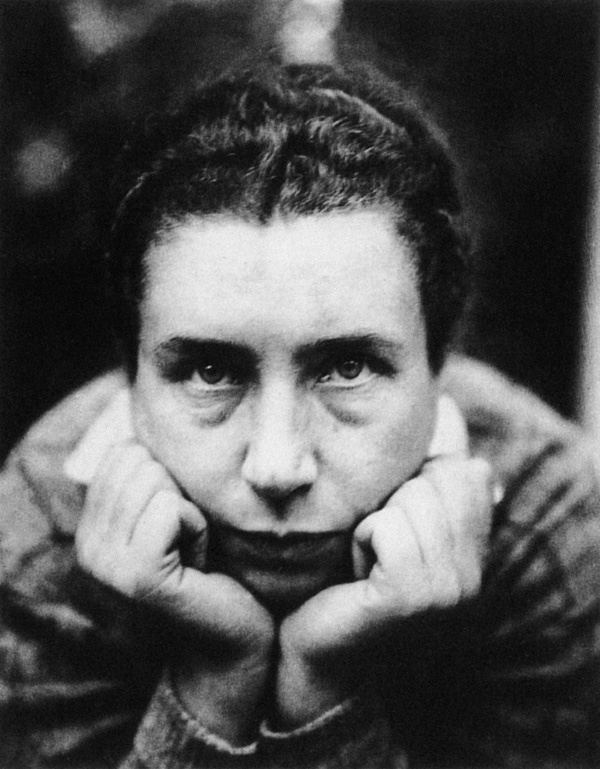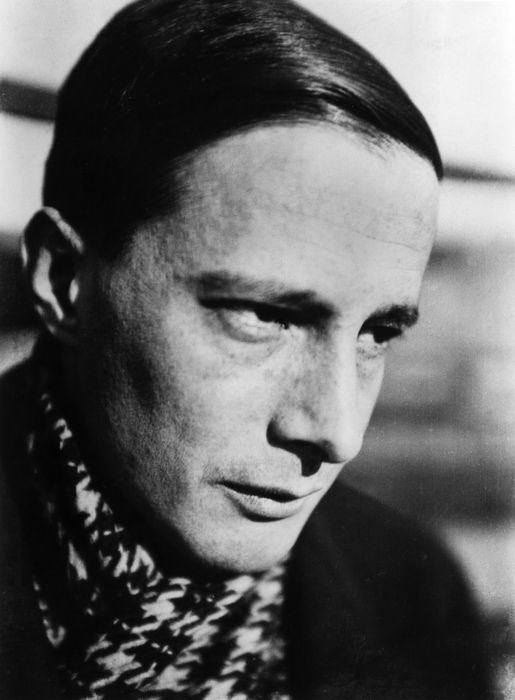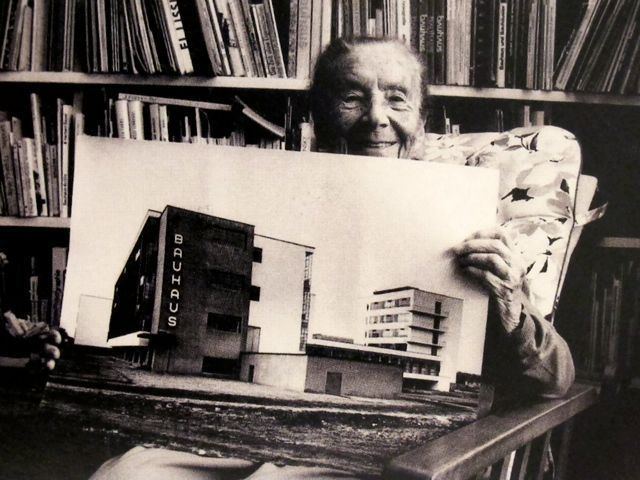Name Lucia Moholy Role Photographer | Siblings Franz Schulz | |
 | ||
Spouse Laszlo Moholy-Nagy (m. 1921–1934) People also search for Laszlo Moholy-Nagy, Sibyl Moholy-Nagy, Franz Schulz, Hattula Moholy-Nagy | ||
Sites of Interchange - Professor Michelle Henning
Lucia Moholy, born Lucia Schulz, (18 January 1894, Prague, Austria-Hungary — 17 May 1989, Zürich, Switzerland) was a photographer. Her photography documented the architecture and products of the Bauhaus and introduced their work to a post-World War II audience. However, Moholy was seldom credited for her work, which was often attributed to László Moholy-Nagy or Walter Gropius.
Contents

Biography

In the early 1910s Lucia Moholy studied philosophy, philology, and art history, at the University of Prague. In 1915 she shifted her attention to publishing and worked as an editor for several publishing houses in Germany. In 1919 she published radical, Expressionist literature under the pseudonym Ulrich Steffen. She met Hungarian artist László Moholy-Nagy in 1920 in Berlin and married him on her 27th birthday in January 1921.The two would spend five years at the Bauhaus, where Lucia Moholy would explore her affinity with photography.

Her husband became a master at the Bauhaus in 1923 with Lucia Moholy as his primary darkroom technician and an important collaborator. She also became an apprentice in Otto Eckner’s Bauhaus photography studio. Moholy studied at the Leipzig Academy for Graphic and Book Arts (Academy of Visual Arts, Leipzig) where she became a skilled photographer. Together the couple lived in Weimar and Dessau and she would produce images and portraits associated with that school. Moholy documented the interior and exterior of the Bauhaus architecture, its facilities, as well as the students and teachers. Her aesthetic was part of the Neue Sachlichkeitm (New Objectivity) which focused on documentation from a straightforward perspective. Moholy’s Bauhaus photographs helped construct the identity of the school and created its image.

Lucia Moholy and her husband experimented with different processes in the darkroom, such as photogram. In numerous publications, all of the experimentation the couple had done was credited solely to László Moholy-Nagy, such as the book Malerei, Photografie, Film (1925; Painting, Photography, Film), which was published only under her husband’s name.
In 1929 the couple separated. That same year Lucia Moholy was included in the landmark exhibition in Stuttgart, “Film and Foto”. It featured artists working in the New Vision aesthetic (“Precisionism”).
She then taught photography at a private art school in Berlin directed by Johannes Itten. In 1933 when the National Socialist German Workers Party rose to power she emigrated to London to flee from World War II. There, she focused on commercial photography and teaching. She also published a book, A Hundred Years of Photography, 1839-1939, written in English, which discussed in depth the history of the medium. Moholy a microfilm operation based at the London Science Museum Library, for the Association of Special Libraries and Information Bureaux (Aslib). There she reduced the scale of photographic documents and had them stored at the London Science Museum Library.
In 1946 to 1957, immediately after the war, she traveled to the Near and Middle East for projects for UNESCO, where she did photographic reproduction processes of graphic material. Moholy then moved in 1959 to Zollikon, Switzerland where she wrote about her time at the Bauhaus and focused on art criticism.
In 1972 she published Moholy-Nagy Notes which discussed the shared collaboration between herself and László Moholy-Nagy at the Bauhaus and attempting to reclaim her photographs and experimentation.
Recognition
Lucia Moholy struggled to receive recognition for her work. Her images were used for marketing and in the Bauhaus school’s sales catalogs, as well as Bauhaus books that she edited. In 1933 Moholy was dating a Communist Member of Parliament, who was arrested in her apartment one day when she was out. She fled to Prague and stayed with family, and then to Switzerland, then Austria, then Paris, and finally settled in London. She had left everything behind in Berlin, including left glass negatives of her photographs of the Bauhaus. They ended up in the hands of Walter Gropius. While she resided in London, an interest in the Bauhaus started to grow, and she saw numerous catalogs of the Bauhaus printed with her lost images. Gropius had been using her photographs without crediting her. In an exhibition on the Bauhaus at the Museum of Modern Art (MoMA) in 1938, Gropius used nearly 50 of Moholy’s images for the exhibition and the accompanying catalogue without crediting her once. She repeatedly reached out to Walter Gropius to reclaim her images and he would continuously protest. Moholy resulted to hiring a lawyer to retrieve her work.
On the website 99% Invisible, letters from Walter Gropius and Lucia Moholy were retrieved. Moholy stated, "These negatives are irreplaceable documents which could be extremely useful, now more than ever" to which Gropius replied, "...long years again Berlin, you gave all these negatives to me. You will imagine that these photographs are extremely useful to me and that I have continuously made use of them; so I hope you will not deprive me of them." Lucia Moholy responded, "Surely you did not expect me to delay my departure in order to draw up a formal contract stipulating date and conditions of return? No formal agreement could have carried more weight than our friendship. It is a friendship I have always relied on, and which, also, I am now invoking."
Moholy did not get a hold of her original material, until the 1960s, but even then she only retrieved a number of them. Her 1972 publication, Moholy-Nagy Notes, was an attempt to reclaim her work that was printed without permission.
Related Artists
László Moholy-Nagy (1895-1946)
Walter Gropius (1883-1969)
Florence Henri (1893-1982)
Georg Muche (1895-1987)
Franz Roh (1890-1965)
Marianne Brandt (1893-1983)
Gunta Stölzl (1897-1983)
Otti Berger (1898-1944/45)
Grete Stern (1904-1999)
Bauhaus (1919-1933)
